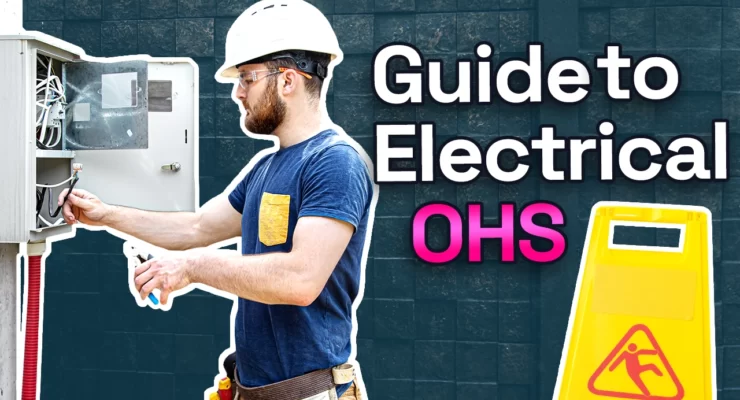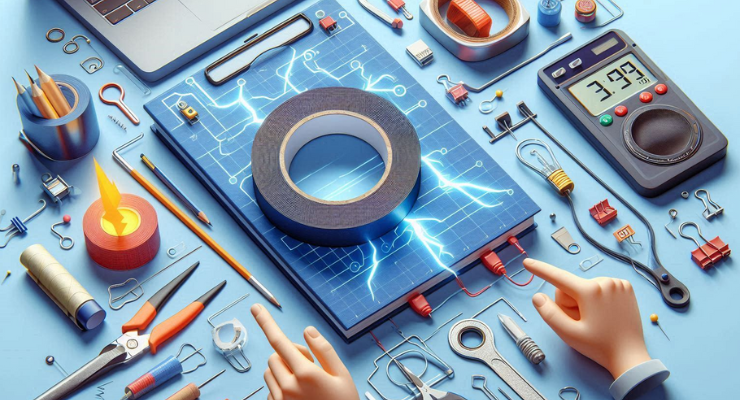Fast read
Electricity is an essential part of most workplaces, but it can also pose a risk if mishandled. To ensure safety in the workplace, certain practices should be followed.
Keep water and other liquids at least 1.5 metres away from electrical sources and use Ground Fault Circuit Interrupters to prevent electrical shock, overheating, and fires.
Proper handling of electrical equipment is crucial for safety. Inspect electrical cords for damage, avoid stretching power cables, and use physical barriers for electrical hazards, such as cabinet doors on electric panels.
What Electrical Safety Tips are there for the workplace?
Today, electricity runs most things we do and use, especially at work. While electricity makes most things much more efficient, it can also create hazards if not used or taken care of correctly. If you work with electricity, use the electrical safety tips below to ensure you and your workplace are as safe as possible.
Use electrical safety equipment the right way
Everyone at work needs to handle electrical equipment how they are supposed to. This means not pulling too hard on power cords, unplugging cords by the plug, not the wire, and always looking at power cords for cuts or any other damage or wear.
Prevent electrical equipment from coming in contact with wet areas
Keep water and other wet things at least 1.5 metres away from all electricity when possible. As water is a conductor of electricity, it can become extremely problematic if it comes into contact with it.
If you need electricity and water close together, you can use ground fault circuit interrupters (GFCIs) to help prevent shocks, overheating, and fires.

Promote electrical safety practices in the workplace
Ensuring that staff are correctly handling electrical equipment is crucial for maintaining electrical safety in the workplace. All employees should know what to do and what not to do with all the devices they use.
Common mistakes include overly stretching power cables bending the pins of a cord and then forcing them into the plug. Also pulling on the cord to unplug instead of making the effort to pull on the modern plug ring is a common issue. Employees should also be comfortable reporting potential electrical safety hazards, and poor safety considerations by colleagues, no matter how minor.
Information about how to use specific electrical devices should also be visible. Making a step-by-step list for particular equipment or using signs as reminders around the workplace can be practical tools.
Electrical safety training
Electrical safety training may be necessary if you manage or work in a workplace that uses various electrical appliances. Training should involve informing new employees on how to correctly handle electrical devices and identify potential hazards and first-aid procedures for electrical incidents, such as burns. As mentioned, always ask someone who knows how to use something and uses common sense.
Have physical barriers for electrical hazards
Physical barriers should always be used in the workplace to ensure electrical safety. This is primarily done by having cabinet doors on electric panels so that employees are protected from the potential of coming into contact with live wires.
Watch out for flammable materials
Most electronic devices create heat. Therefore, all flammable materials should be located away from electricity to minimise the fire risk. Devices that create heat should also have adequate ventilation. If they are stored in a hot, confined space, the chances of the device overheating and causing a fire or power surge increase.
Watch out for conductive materials or tools
If you are working in an area where there is an electrical hazard, always assume that the source is live. This means do not use any conductive materials or tools near the hazard. If you clean the area, water-based and some solvent materials are conductive, so keep them away from any live electrical equipment.
Make sure you understand the switchboard
The switchboard is an electrical safety device that can protect the operator from electrical currents. The switchboard’s primary role is to control the flow of electricity. This means that to ensure safety, ensure you understand how much power should flow in and out of your appliances so that overheating or fires don’t occur.
Also, understand what switches on the switchboard control what devices. If there is an issue with a device in the workplace, you will likely have to turn the power source off. Instead of having to guess, knowing exactly what to turn off is essential.
Watch out for flickering lights
If you notice flickering lights, it can be a sign of loose connections or a problem with the bulb itself. If this occurs, ensure you have them professionally checked, and turn their power source off to prevent further issues.
Replace defective cords
If you notice a cord is frayed or damaged in another way, tell your manager or the person in charge. When informed, they should get a professional to replace it immediately. In the meantime, you should turn the power source to that cord off to ensure a bigger issue does not arise.

Regular equipment maintenance
All electrical devices should be regularly assessed and maintained. Old electrical devices appear fully functioning and efficient but maybe a few use away from a power surge. Workplaces should have their devices routinely checked to protect their staff. If you feel a device has been overused or not checked, inform your manager.
Know where the emergency shutdown switch is
Most, if not all, electrical appliances will have an emergency shutdown switch or button. If an emergency occurs, you may need more time to scramble and try and find it.
Call for help
If an emergency in your workplace has to do with an electrical hazard, such as fallen power lines, do not hesitate to call emergency services. Make sure you avoid taking the situation head-on without any help.
Those are all the Electrical Safety Tips for the Workplace
You will be much safer in the workplace, knowing what to look out for and what to do if an electrical hazard occurs. Always be aware and take as many electrical safety precautions as possible. Hopefully, these electrical safety tips can be useful in your workplace.



